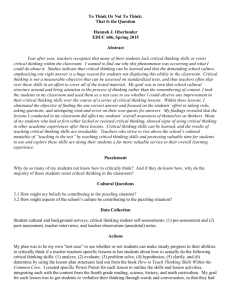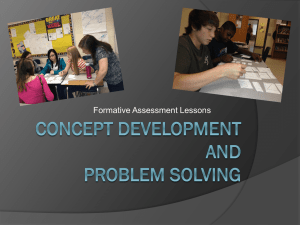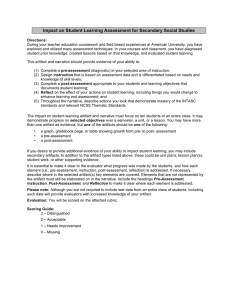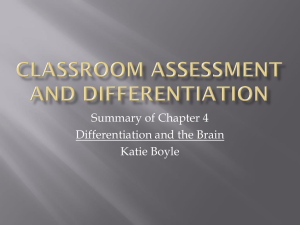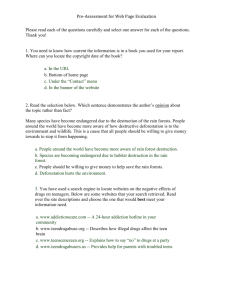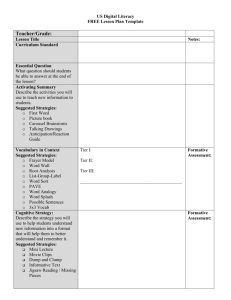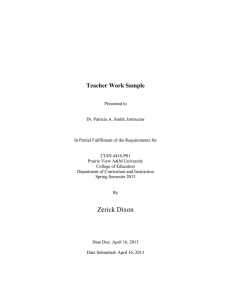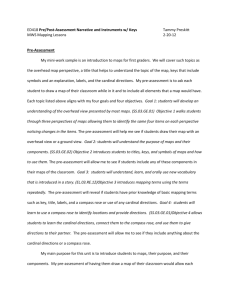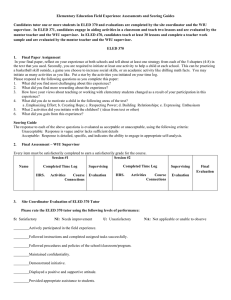Assessment Plan - Longwood Blogs
advertisement
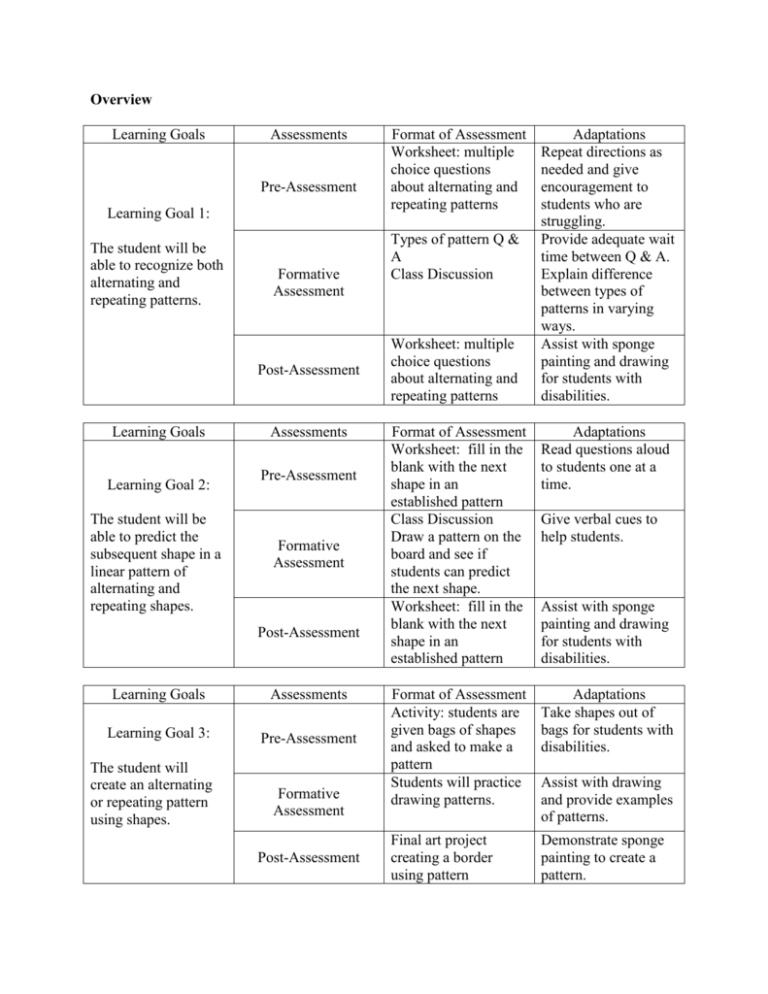
Overview Learning Goals Assessments Pre-Assessment Learning Goal 1: The student will be able to recognize both alternating and repeating patterns. Formative Assessment Post-Assessment Learning Goals Learning Goal 2: The student will be able to predict the subsequent shape in a linear pattern of alternating and repeating shapes. Assessments Pre-Assessment Formative Assessment Post-Assessment Learning Goals Assessments Learning Goal 3: Pre-Assessment The student will create an alternating or repeating pattern using shapes. Formative Assessment Post-Assessment Format of Assessment Worksheet: multiple choice questions about alternating and repeating patterns Types of pattern Q & A Class Discussion Worksheet: multiple choice questions about alternating and repeating patterns Adaptations Repeat directions as needed and give encouragement to students who are struggling. Provide adequate wait time between Q & A. Explain difference between types of patterns in varying ways. Assist with sponge painting and drawing for students with disabilities. Format of Assessment Worksheet: fill in the blank with the next shape in an established pattern Class Discussion Draw a pattern on the board and see if students can predict the next shape. Worksheet: fill in the blank with the next shape in an established pattern Adaptations Read questions aloud to students one at a time. Format of Assessment Activity: students are given bags of shapes and asked to make a pattern Students will practice drawing patterns. Adaptations Take shapes out of bags for students with disabilities. Final art project creating a border using pattern Demonstrate sponge painting to create a pattern. Give verbal cues to help students. Assist with sponge painting and drawing for students with disabilities. Assist with drawing and provide examples of patterns. Learning Goals Learning Goal 4: The student will be able to compare different patterns and describe the similarities and differences between them. Assessments Pre-Assessment Formative Assessment Post-Assessment Learning Goals Learning Goal 5: The student will discuss the ideas and feelings they choose to represent in their artwork. Assessments Pre-Assessment Formative Assessment Format of Assessment Students will be shown two examples of artwork that show pattern and asked how they are similar and different. Adaptations Provide ample wait time after asking questions. Give verbal cues and point towards certain features of the artworks. Students will compare Facilitate class and contrast their final discussion. project pattern with that of a partner in a discussion. Format of Assessment Show students examples of artwork that show emotion and ask if they can describe what emotion is being represented. Q & A about ways to represent emotion in a drawing or painting. Class Critique Post-Assessment Adaptations Draw students’ attention to facial expressions and color choices that would indicate emotion. Provide sufficient wait time between each question and explanation. Facilitate and explain the process of an art critique. Pre-Assessment and Post-Assessment I will employ several methods of evaluation to assess student achievement. Students will be completing two formal pre-assessments, one which is a kinesthetic activity and the other being a worksheet. To evaluate students’ activity pre-assessment, I will walk around the room while the students are attempting to make their patterns and record whether they are making a pattern, and if so, what type of pattern they are creating. I will also record whether students make a pattern not only using shapes but also if they make one using color as a personal note to possibly refer to in later lessons. To evaluate the pre-assessment and post-assessment worksheets, I will create an answer key to score each student’s work. Depending on how each student performs on the pre-assessments, I will adapt my learning goals so that the students do not waste time on information that they already know. If the students display solid knowledge of the basic types of patterns, then I will change my learning goals to reflect that understanding. To evaluate the post-assessment for this unit, I will create a scoring rubric on a four point scale that adequately addresses Learning Goal 3. The first rubriced item will evaluate students’ representation of pattern in the border of their artwork. The students will score a 4 if they create an alternating or repeating pattern. If a student illustrates an attempt at a pattern, such as if the majority of the border shows the same pattern except for one side where it is evident the student lost track of their pattern, then that student will score a 2. If a student shows a placement of random shapes without any clear attempt at a pattern, then the student will score a 0. For the other two rubriced items—Rendering of Fall Activity and Craftsmanship—students have the opportunity to earn either 4, 3, 2, 1, or 0 depending on factors listed in the rubric at the end of the section. Although these items are not measuring learning goals, they would still be important factors in the overall grade of the artwork. Learning Goals 4 and 5 will be post-assessed through individual discussion with each student and also by a class critique. During the critique, students will be partnered together and given time to talk about the emotions or ideas they expressed in their personal artwork. They will then be expected to give positive feedback to their partner. At this time, I will walk around the room to listen and evaluate their discussions and facilitate some questions if needed. Formative Assessment To track student progress throughout the unit, I plan to use several means of formative assessment. During days of instruction, I will continually ask questions about the material at hand to check for understanding of key concepts, such as the meaning of a pattern and the basic types of pattern. This would be important at the beginning of the unit since a basic knowledge of pattern would be necessary in order to comprehend the proceeding information in the rest of the unit. Another type of formative assessment I will use will be to allow the students to practice making patterns. I will clarify to the students that the activity is simply practice, but I will look at each student’s practice drawings to see whether they grasp the meaning of a pattern in art. This will be done in the middle of the unit so that they have a clear understanding of the material before they begin their final art project. Given the time constraints of the class I will be working with, I will have to begin a summative assessment early on in the unit, but I will take every opportunity available during class instruction to formatively assess student learning.
